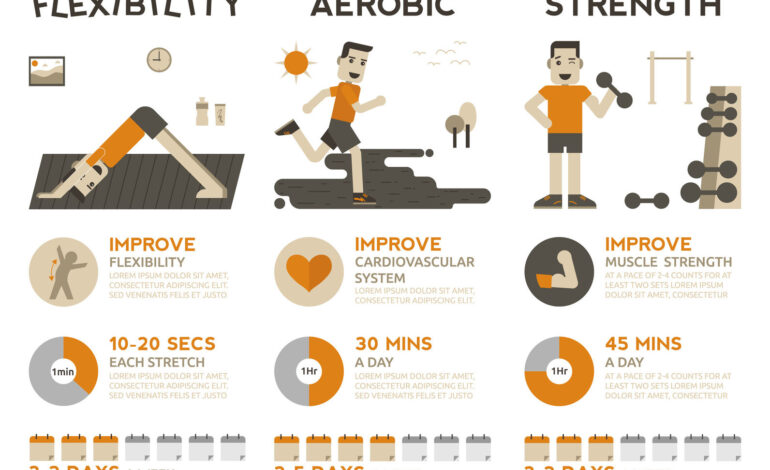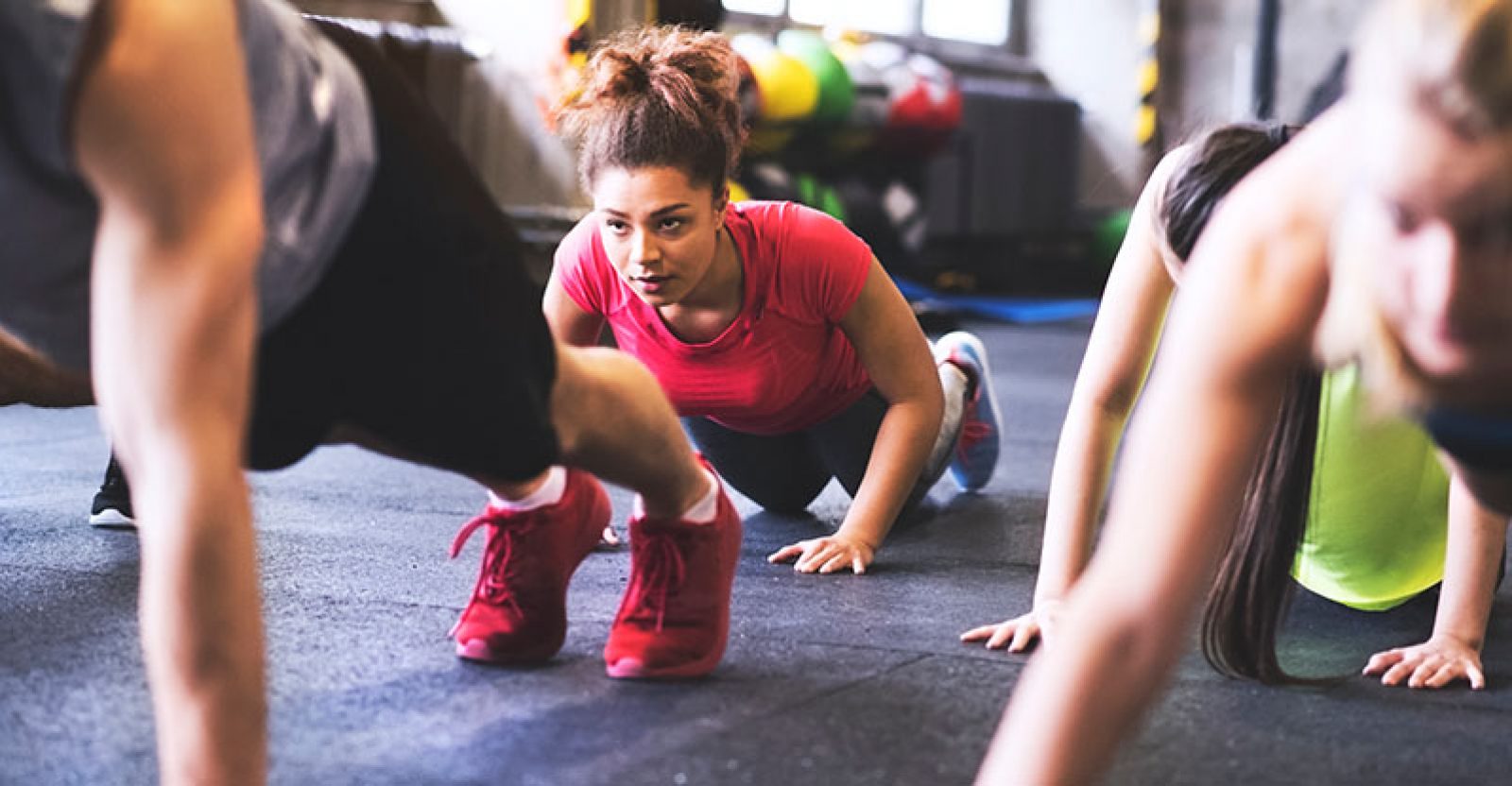Fitness & Exercise

Unlocking Your Potential: A Comprehensive Guide to Fitness & Exercise
Embarking on a fitness journey can feel overwhelming. Where do you start? What exercises are right for you? How do you stay motivated? This post aims to demystify the world of fitness and exercise, providing a comprehensive guide to help you achieve your goals, whether they’re weight loss, muscle gain, improved endurance, or simply feeling better overall.
Understanding the Pillars of Fitness
Before diving into specific exercises, it’s crucial to understand the four core pillars of fitness: Cardiovascular Endurance, Muscular Strength & Endurance, Flexibility, and Body Composition. Let’s break each down:
- Cardiovascular Endurance: This refers to your heart and lungs’ ability to supply oxygen to working muscles during sustained activity. Think running, swimming, cycling – anything that keeps your heart rate elevated for a prolonged period. Improving this pillar helps with stamina, reduces risk of chronic diseases, and boosts overall energy levels.
- Muscular Strength & Endurance: Strength is the ability to exert force, like lifting heavy weights. Endurance refers to how long you can sustain those efforts. Building both is vital for functional fitness – everyday tasks become easier, injuries are less likely, and your metabolism gets a boost.
- Flexibility: The range of motion around your joints. Good flexibility reduces injury risk, improves posture, and enhances athletic performance. Stretching regularly should be a key component of any fitness routine.
- Body Composition: This refers to the proportion of fat mass versus lean mass (muscle, bone, water). Optimizing body composition is generally about increasing muscle mass and decreasing excess body fat.
Cardiovascular Exercise: Getting Your Heart Pumping
Cardio is often seen as the foundation of a good fitness program. Here are some effective options:
-
- Running/Jogging: Accessible, requires minimal equipment. Vary your pace and terrain for optimal results.
- Swimming: Low-impact, full-body workout. Excellent for joint health.
Cycling: Great for leg strength and endurance. Can be done indoors or outdoors.
- Walking/Brisk Walking: A fantastic starting point for beginners. Gradually increase speed and distance.
- Dancing: Fun and engaging way to elevate your heart rate!
- Group Fitness Classes (Zumba, Aerobics): Provides motivation and structure.
Recommendation: Aim for at least 150 minutes of moderate-intensity cardio or 75 minutes of vigorous-intensity cardio per week, as recommended by health organizations.
Strength Training: Building Muscle & Boosting Metabolism
Don’t underestimate the power of strength training! Building muscle not only improves your appearance but also increases your metabolism, making it easier to manage weight and improving overall health. Here are some approaches:

- Weightlifting (Dumbbells, Barbells): Classic method for building strength. Requires proper form to avoid injury – consider working with a trainer initially.
- Bodyweight Exercises: Utilize your own body weight as resistance. Examples include push-ups, squats, lunges, planks. Excellent for beginners and can be done anywhere.
- Resistance Bands: Portable and versatile. Provide varying levels of resistance.
- Machine Weights: Offer guided movements, often suitable for those new to strength training.
Recommendation: Aim for strength training at least 2-3 times per week, working all major muscle groups (legs, back, chest, shoulders, arms, core).
Flexibility Training: Stretching for Injury Prevention & Improved Performance
Stretching is often overlooked but crucial for injury prevention and improved range of motion. Incorporate these into your routine:
- Static Stretching: Holding a stretch for 15-30 seconds. Best done *after* workouts.
- Dynamic Stretching: Controlled movements that gradually increase range of motion. Ideal as part of a warm-up. (e.g., arm circles, leg swings)
- Yoga/Pilates: Excellent for improving flexibility and core strength.
Recommendation: Stretch daily or at least several times per week.
Nutrition & Hydration: Fueling Your Fitness
Exercise is only half the battle. Nutrition plays a vital role in achieving your fitness goals.
- Balanced Diet: Focus on whole, unprocessed foods – fruits, vegetables, lean protein, and complex carbohydrates.
- Hydration: Drink plenty of water throughout the day, especially before, during, and after workouts.
- Protein Intake: Crucial for muscle repair and growth.
Motivation & Consistency: Staying on Track
Consistency is key to achieving long-term fitness success. Here are some tips to stay motivated:
- Set Realistic Goals: Start small and gradually increase intensity and duration.
- Find an Accountability Partner: Working out with a friend or family member can provide motivation and support.
- Track Your Progress: Monitoring your results helps you see how far you’ve come and stay motivated to continue.
- Mix It Up: Avoid boredom by trying new exercises and activities.
- Reward Yourself (Healthily): Celebrate milestones with non-food rewards – a new workout outfit, a massage, or a relaxing activity.
Listening to Your Body
Important! Pay attention to your body’s signals. Rest when needed and don’t push through pain. Proper rest and recovery are just as important as the workouts themselves. Consulting with a healthcare professional before starting any new fitness program is always recommended, especially if you have pre-existing health conditions.
Conclusion: Your Fitness Journey Starts Now
Achieving your fitness goals takes time, effort, and dedication. By understanding the core pillars of fitness, incorporating various exercises into your routine, prioritizing nutrition and hydration, and staying motivated, you can unlock your potential and enjoy a healthier, more active lifestyle. Don’t wait – start today!



